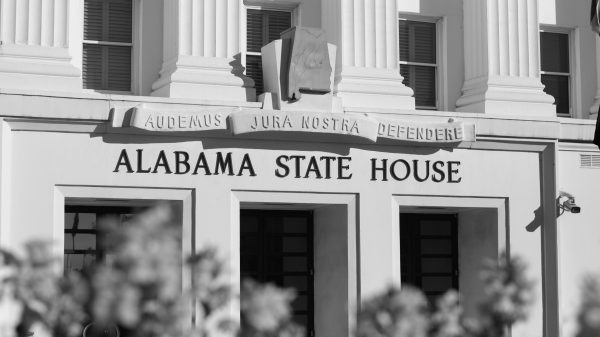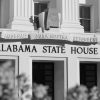By Bill Britt
Alabama Political Reporter
MONTGOMERY—All around the country, research provided by Pew’s Public Sector Retirement Systems Project is fueling the debate over pension reform. The organization recently gave a presentation at the Joint Committee of Alabama Public Pension Fund, but other research doesn’t agree with Pew’s findings, and many question the organizations agenda.
During the 2015 Regular Session, the State Legislature passed a joint resolution establishing the Joint Committee On Alabama Public Pensions. Perhaps, not coincidentally, a very similar, Concurrent Resolution passed the Kentucky General Assembly, in August 2015.
This appears to be part of a national movement by Republican lawmakers and operatives, to dismantle public employee pension plans, like the Retirement Systems of Alabama (RSA).
Kentucky’s HCR 162 and Alabama’s HJR 288 are copy and paste agendas, with the same goal of privatizing state pension plans.
Some see this fill-in-the-blank form of public policy as a flawed method, given that pension plans, like state economies, are often very different.
Pew’s partnership with the Laura and John Arnold Foundation in Houston, has also cast some doubt on the real motivation behind the reforms being pushed. John Arnold is a Texas billionaire, who was a Enron trader. The company’s notorious collapse in 2001, wiped out $2 billion of its own employee pension funds, and cost public employees pension funds, which were invested in Enron, 1.5 billion, according to reports in the New York Times.
Jordan Marks, executive director of the union-funded National Public Pension Coalition told Politico, the battle to reform state pension plans is a “highly coordinated national effort,” in which he says Arnold is a leading player.
Pew’s critics claim that the groups research greatly exaggerates the insolvency of public pensions around the country. Others charge the group is manufacturing a crisis in order to abolish public employee pension plans altogether, in favor of 401(k) defined contribution plan.
According to investopedia.com:
“The biggest difference between a 401(k) plan and a traditional pension plan is the distinction between a defined benefit plan and a defined contribution plan. Defined benefit plans, such as pensions, guarantee a given amount of monthly income in retirement and place the investment risk on the plan provider. Defined contribution plans, such as 401(k)s, allow individual employees to choose their own retirement investments with no guaranteed minimum or maximum benefits. Employees assume investment risks in defined contribution plans.”
Alabama’s Joint Committee is considering a hybrid of the currently defined benefits, with a 401k defined contribution plan. This is said to be a way to offset the cost to the State.
There is a claim, that switching from a defined benefit to a defined contribution saves taxpayer dollars. However, a February 2015 report by the Institute on Retirement Security found the opposite to be true. According to the study, an “analysis of the economic efficiencies of defined benefit (DB) plans reconfirmed, that pensions deliver the same amount of lifetime income for about half of the cost of providing the lifetime income from a typical DC plan.”
This conclusion was based on cases studies of pension plans that made the switch to a hybrid model. The findings show, rather than saving states money, the move “exacerbated funding problems and drove up pension debt.”
The study suggests, “The best way to address a pension underfunding problem is to implement a responsible funding policy of making the full annual required contribution each year and to evaluate and adjust assumptions as well as funding over time.”
The study examines what happened when West Virginia Teachers Retirement System (TRS) was moved from a DB plan to a DC one.
TRS, a traditional DB plan, was historically underfunded, due to lack of contributions from the state. The state took measure 1991 to address the problem by closing the TRS, and moving newly hired teachers into a DC plan. Teachers in the DB plan were given a one-time choice to move to the DC plan.
“The state later found, however, that this ‘funding solution’ had overlooked some important considerations,” according to the report by 2005, TRS paid pension benefits to nearly 27,000 retired teachers, while less than 18,000 active teachers still contributed to the fund. The plan’s funding level stood at just 25 percent and was in significantly worse shape after the switch. West Virginia eventually reopened it DC plan to new teachers.
While Pew and investors like Arnold are offering research that points in one direction, it will be important that the 16 Alabama lawmakers in charge with offering ideas on pension reform do not, like West Virginia, “overlook important considerations.”

















































